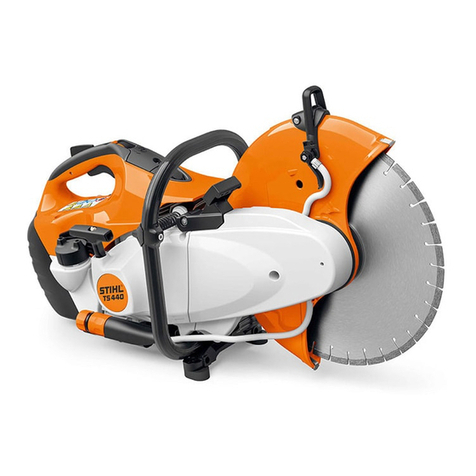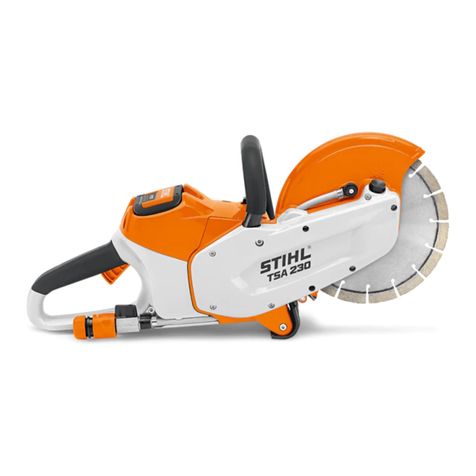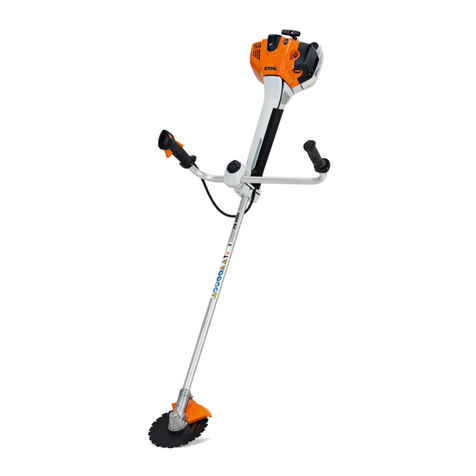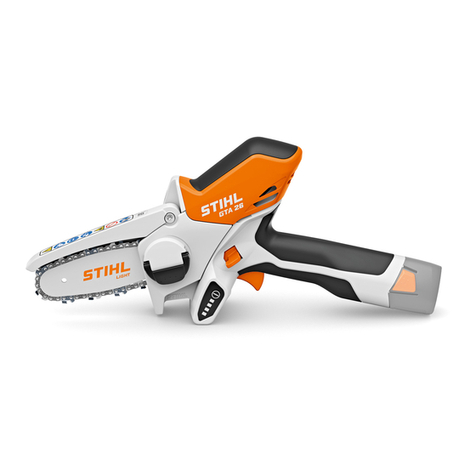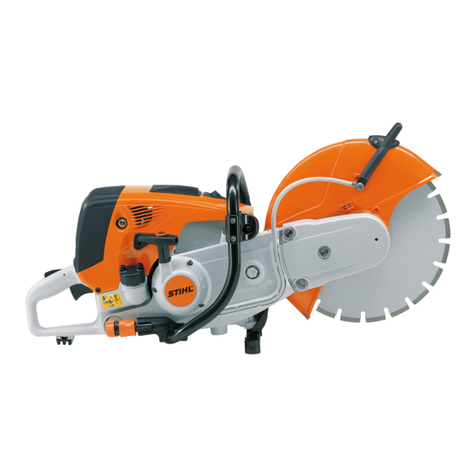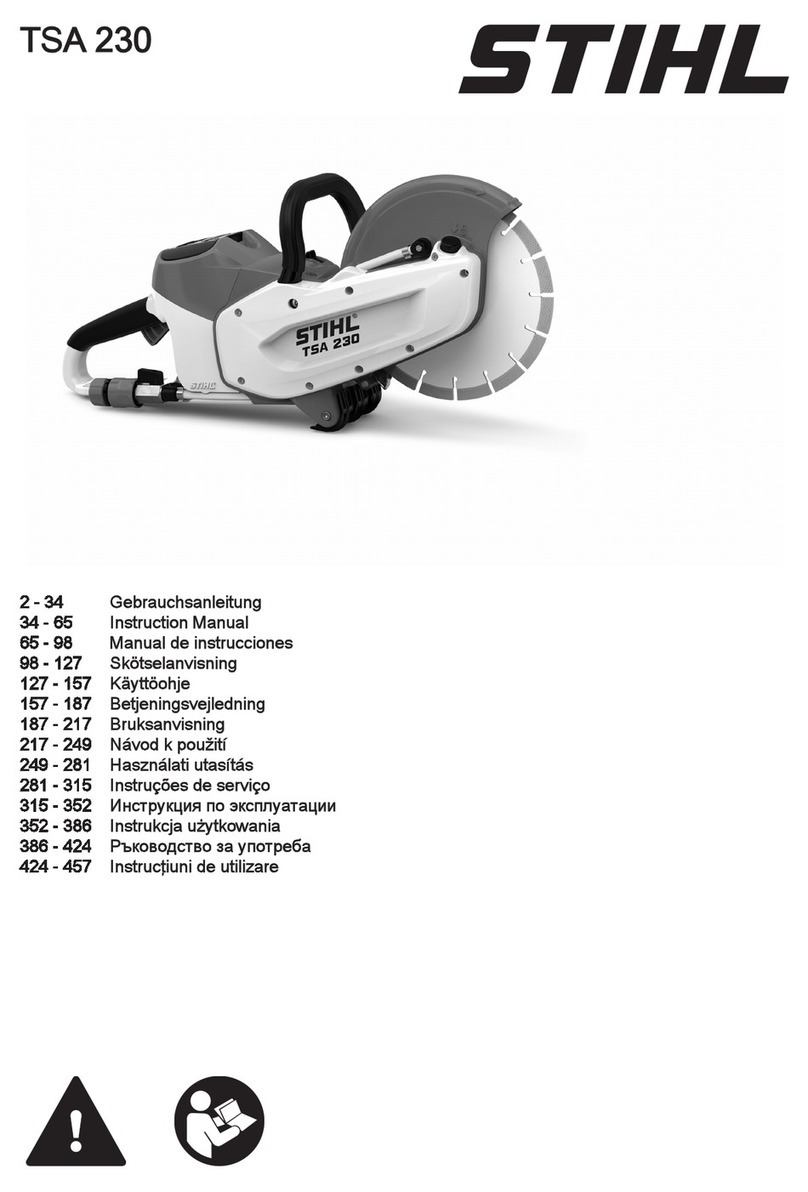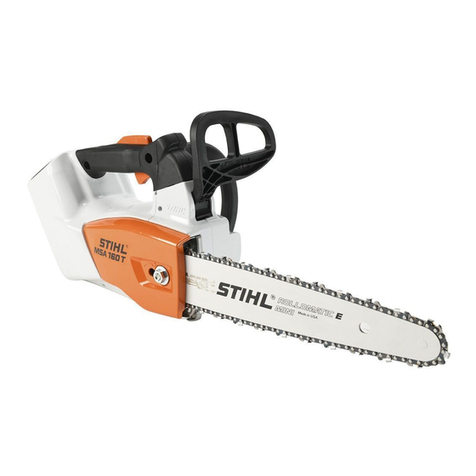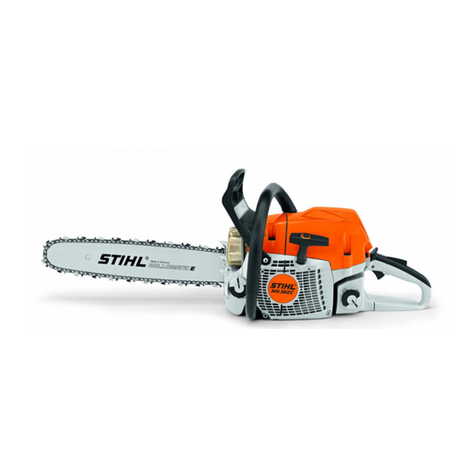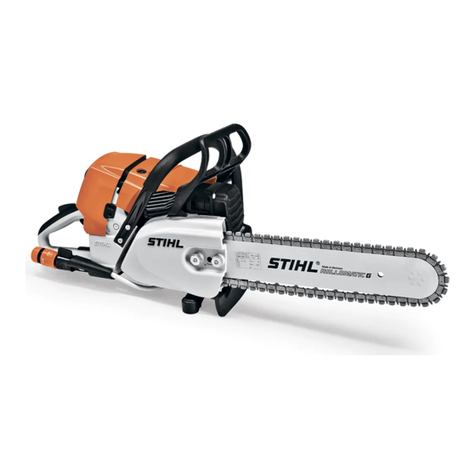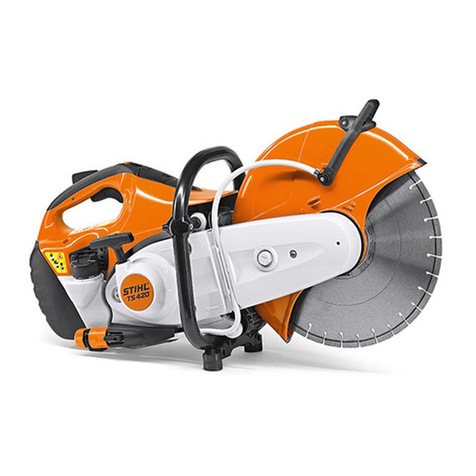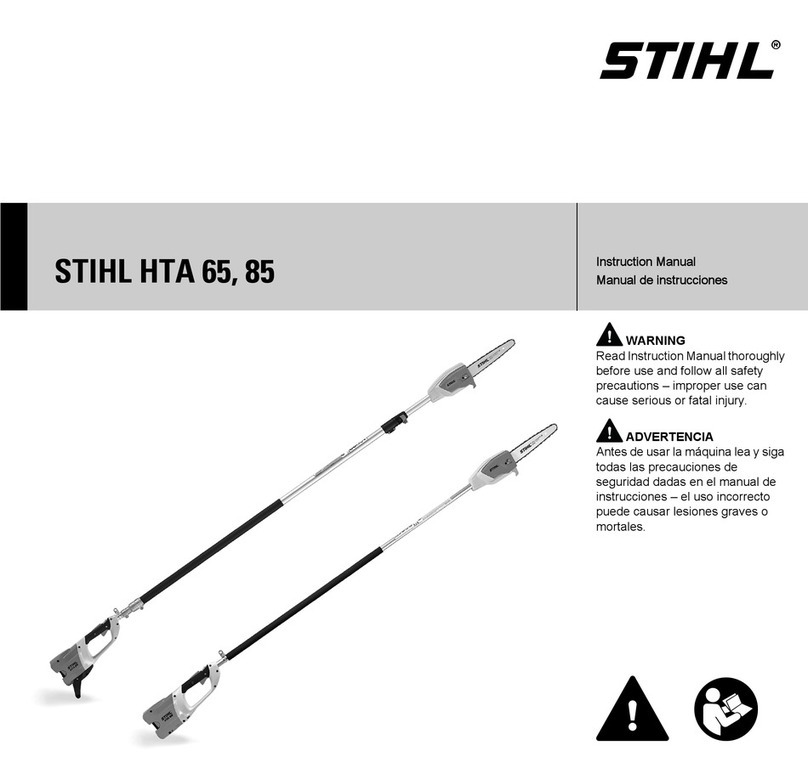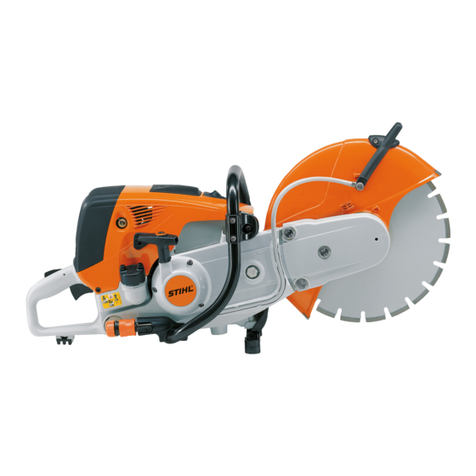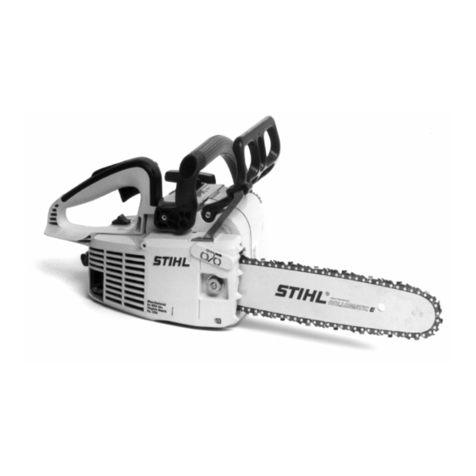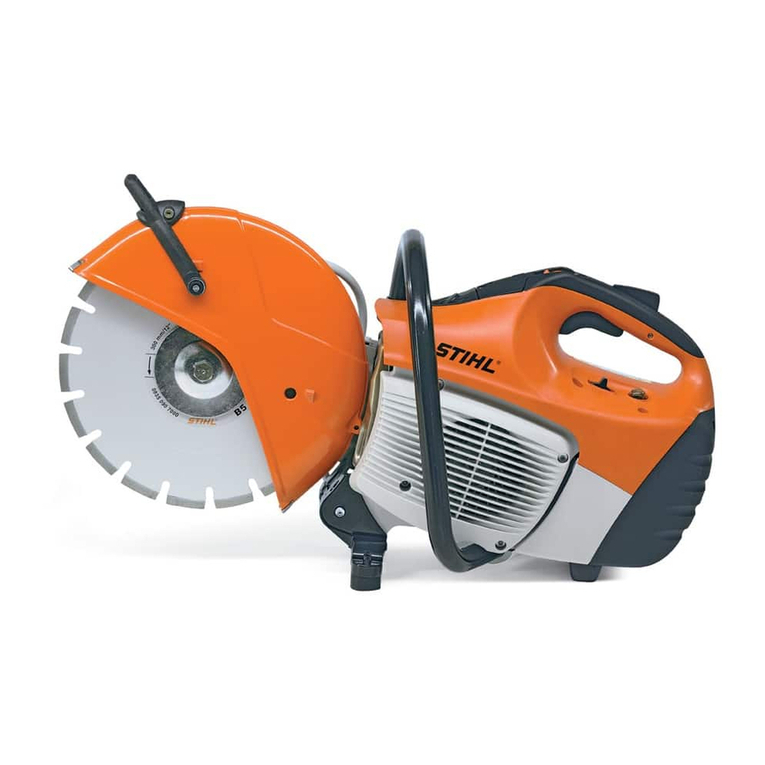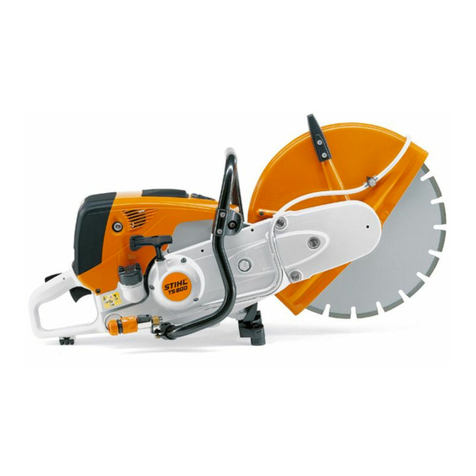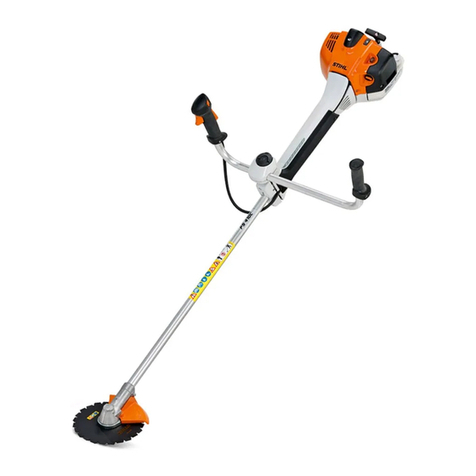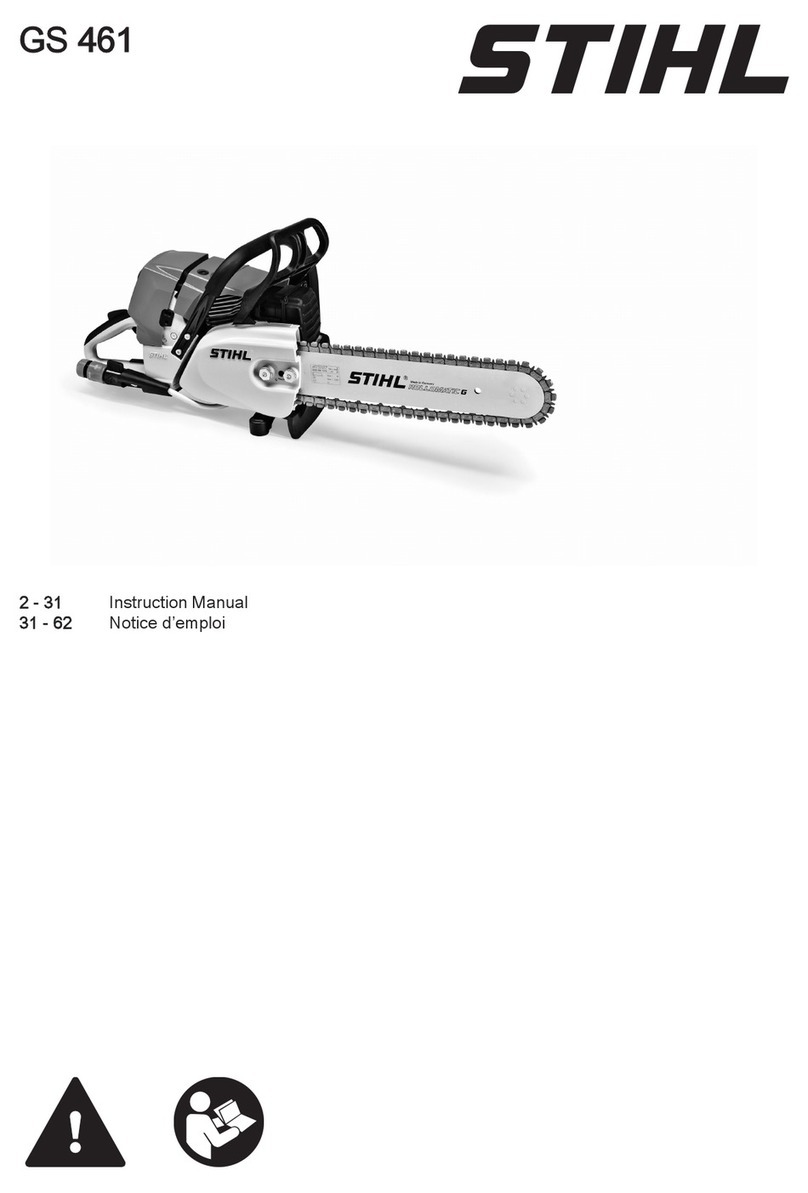2. Equipment
The STIHL TS 400 is equipped with the newly developed long-term air filter system with compensator, the
STIHL quickstart system with ElastoStart and decompression valve, the AV handle system, semi-automatic
V-belt tensioner, fuel tank with integrated expansion reservoir, electronic magneto-ignition system with
speed limitation, and a new, light aluminium guard.
1
23
338TI001 K
3. Technical description
Air filter system and compensator
In combination with the compensator, the long-term
air filter system which has been specially
developed for the TS 400 permits long service
periods and therefore cuts service costs.
The entire intake of combustion air has been
optimally designed:
––Intake ports in the area with the least dust
––High-volume foam prefilter (1)
––Main filter (2) with large filter area, high
dust retention capacity and "self-cleaning" effect
due to the vertical folds
––Auxiliary filter (3) of flocked fabric to filter out
–fine dust
The filter cover is secured by a central wing nut
and can be removed quickly and easily to inspect
and service the prefilter.
Mechanical design of the compensator: The
metering chamber end cover of the carburetor
includes a connector which is linked with the intake
manifold by a hose. This ensures that the pressure
is the same on the clean-air side of the air filter
and at the control diaphragm.
Function: The air flow is reduced by a soiled air
filter, thus causing the pressure to drop not only in
the venturi valve of the carburetor, but also on the
outside of the control diaphragm. The control
diaphragm moves outwards and the needle valve
closes partly so that the supply of fuel is reduced.
This prevents the fuel mixture from becoming too
rich and eliminates the need for further adjustment
of the high-speed adjusting screw as the air filter
becomes increasingly soiled.
The purpose of the compensator is to keep the
proportion of fuel in the fuel/air mix constant,
regardless of the extent to which the air filter is
fouled. The rapid, tangible loss of engine power
due
to fouling of the air filter is delayed considerably in
machines with compensator. This also extends
the intervals between cleaning and the service life
of the air filter system. The optimum performance
is restored as soon as the prefilter has been
cleaned and/or the main filter replaced.
